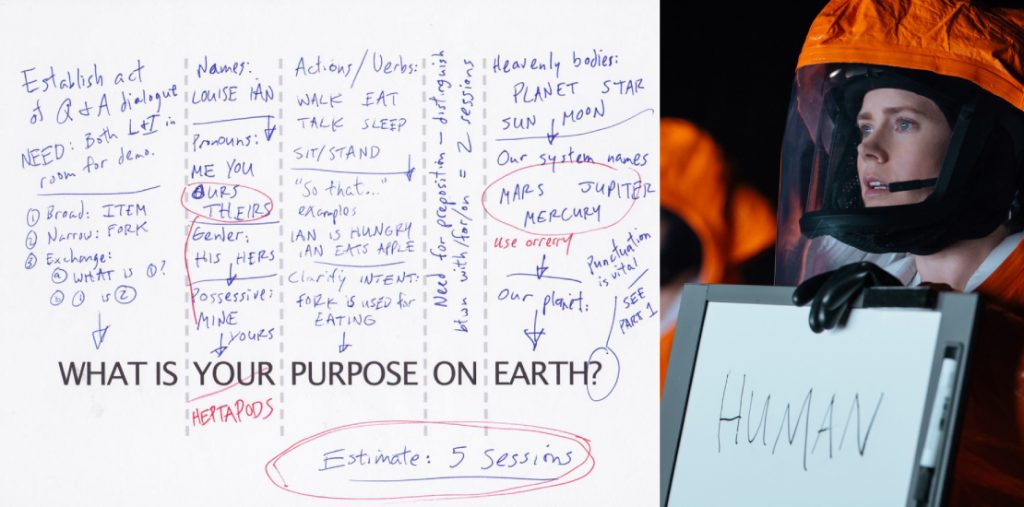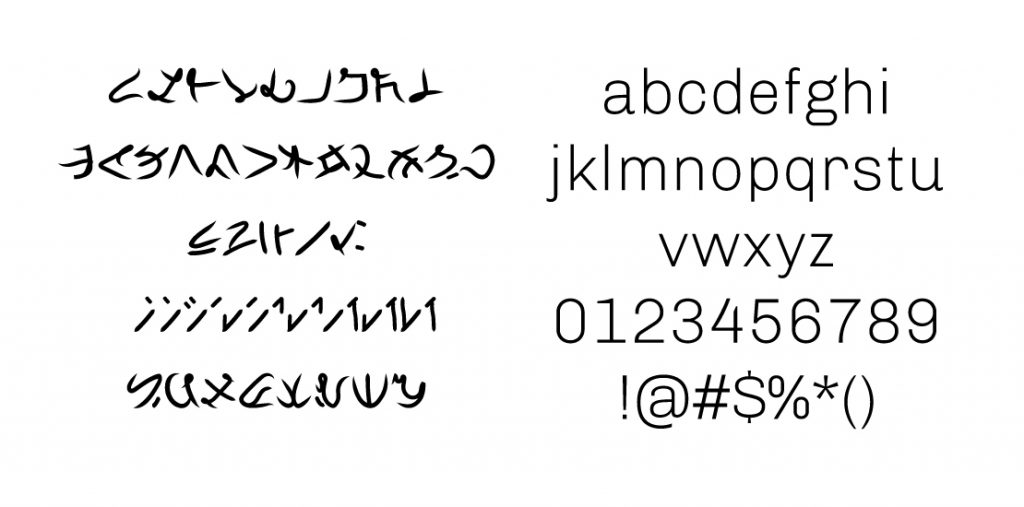This article covers designing an unconventional type or script of an ancient civilization at a certain point in the Arcadian timeline. The challenge was visually representing a communication medium of a writing system that evolved from Godly entities and the first beings of this parallel world.
With the development and understanding of the Lootian culture and geography, our team recently aimed to establish a ground narrative of our history and determine the key that initially powered Arcadia. We questioned whether it was a world coexisting with the Earthian world, one with entirely different physics or metaphysics, one with any scientific laws, or if Lootverse was simply a fragment of a parallel dimension. We are still exploring these specificities.
These questions arise as we realistically design and create the story of our Arcadian world. We are experiencing the birth of politics, entertainment, and economics from the ground up. At the same time, we want to do justice to what follows from that brand. As a designer and problem solver, it was my duty to ensure we create a tool that not only strengthens the Lootian brand but also creates opportunities in the areas of History, Communication, and Art.
The Reverse Engineering Concept

One of my initial inspirations for this project was the narrative and perspectives from the movie Arrival (2016), based on the short story Story of Your Life, by Ted Chiang.
Ian Donnelly: [reading from a book by Louise Banks] “Language is the foundation of civilization. It is the glue that holds people together. It is the first weapon drawn in a conflict.”
Another situation in this eye-opening movie was when they had to understand sounds from Heptapods (aliens in the film).
Louise Banks: “…and “purpose” requires an understanding of intent. We need to find out, do they make conscious choices or is their motivation so instinctive that they don’t understand a “why” question at all? And, most importantly, we need to have enough vocabulary with them that we understand their answer.”
The research was performed on existing evolved systems, such as Cuneiform, Egyptian Hieroglyphics, and Phoenicians, to apply the same analogy and create a lettering system backward. With a shared culture, the global writing system has evolved five times independently to make the English Alphabet we know today. After ideation, we let the final design look like it emerged from the Gods of Lootverse and was developed by the first men in this parallel world.
The Design Process: Style and Personality

To understand how Godly entities could provide such knowledge and visuals to the early beings, we contemplated some medium, surface, or scribing powers the Gods possessed and empowered the scribes. It was then discovered (or instead narrated) that each God had their symbol across Arcadia, where they were scribed magically at the location by “Messengers.” They had apparitions in specific areas and provided divine knowledge to the first men (Messengers). As culture passed through generations, the first men had their own stories engraved on unique stones, later called Minosanite. This stone from Minos Island became famous for the cave walls with the first evidence of a writing system and language of Arcadia, namely Loeic.
Arcadian Alphabet
The rationale for the shape and stroke was explored. In engraving Loeic on the cave walls, the ancient men would perform rituals to communicate with the Gods. They used to stay in a trance to transcend the holy art form into the writing we know today. Rough, sharp, and diagonal strokes prove the design was made irregularly and confidently, with casual inconsistencies.
The “blobs,” or “terminals,” at the start of the writing indicate that the tools used to carve the letters were sharp on one edge and thick on the other end. One can relate the similar aesthetic that the Greeks used from their ancient writing to form the “serifs and sans serifs” we know today. The “baseline” and “x-height” of the font maintain the 1:1 ratio, providing clarity and reliability. Traditional writing systems have “descenders” and “ascenders” in their glyphs, but Loeic uses diagonal strokes in its “counter” itself to resonate with sound variations.
“Kerning” pairs in the Loeic system were essential to implement so that the lettering position and appearance differ when placed in an awkward shape. For example, the letter spacing would vary for pairs “AC” and “AD” based on their original condition. More than 100 pairs of letters were kerned in the making of Loeic.
Loeic Native [Brush Bold] and Loeic Book [Ink Regular] were recently released on The Parliament Discord platform. They are available for Windows and macOS in TTF and OTF formats. Users can then test and provide feedback.
The Future of Loeic

Loeic is the first step towards a new communication means to strengthen the Arcadian culture. The master plan is to create a working language with vocabulary, grammar, and phonetics to make Arcadia’s Loeic the first-ever metaverse cultural language. However, for now, users can communicate fun and socially using the Loeic font and even learn how to write and develop versions of Loeic texts (English Transcriptions).
Loeic is a stepping stone to unveiling an unknown language of another dimension that could answer at least some of the questions from Earthian scientists and astronomers. Understanding Loeic fluently means understanding what is beyond the void and the massive black holes and wormholes connecting to Arcadia. No one knows what is behind this world. At least, not yet.



